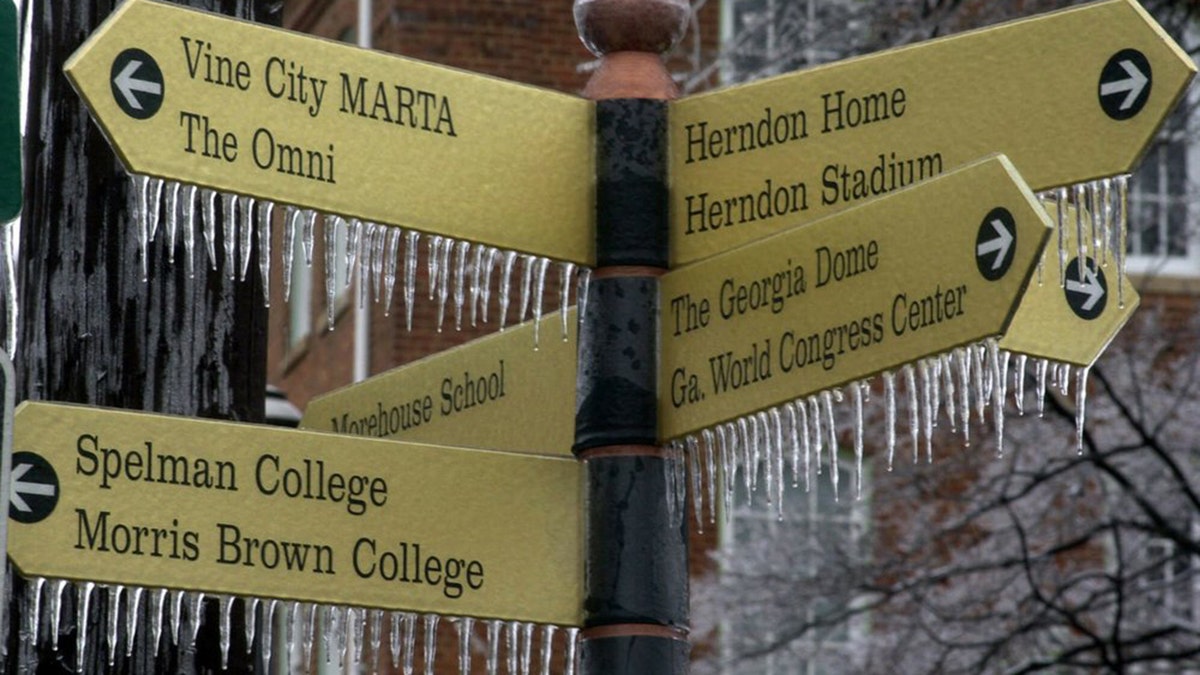Which team will leave Miami the Super Bowl LIV champion?
Super Bowl winner Joe Theismann, college coaching legend Lou Holtz and Barstool Sports founder Dave Portnoy break down the 49ers-Chiefs matchup on 'Watters' World.'
The forecast for Super Bowl LIV in Miami on Sunday may be the biggest winner of this game, but others have been rather stormy.
When the Kansas City Chiefs face off against the San Francisco 49ers at Hard Rock Stadium in Miami Gardens, Fla., both teams will at least be facing perfect weather conditions. The National Weather Service office in Miami says that the forecast for Sunday shows mostly sunny conditions with highs in the upper 60's, with temperatures dipping into the mid-50's by nightfall.
Fox News Senior Meteorologist Janice Dean said the day is "looking spectacular" for kickoff at 6:30 p.m. ET.
CLICK HERE FOR MORE SUPER BOWL LIV COVERAGE
But it hasn't always been that way for the big game. Here are five prior Super Bowls that have seen the worst weather.
--Super Bowl XLI in Miami, 2007
When the Super Bowl was played in Miami in 2007, the weather was quite different.

Fans sit in the rain as they watch Super Bowl XLI between the Chicago Bears and the Indianapolis Colts on February 4, 2007 at Dolphin Stadium in Miami Gardens, Florida. The Colts defeated the Bears 29-17. (Photo by Donald Miralle/Getty Images)
A torrential downpour and windstorm took place during the game and at the halftime show as Prince performed. Producer Don Mischer told Rolling Stone he called up Prince hours before the big show to warn him about the weather.
SUPER BOWL LIV WILL BE HISTORY-MAKING FOR 49ERS COACH KYLE SHANAHAN
"I want you to know it's raining," Mischer said. "Are you OK?"
"Can you make it rain harder?" Prince replied.
The late star closed his epic performance that year with the fitting song, "Purple Rain."
The storm also caused sloppy conditions on the field as the Chicago Bears and the Indianapolis Colts faced off, leading to a total of eight turnovers and five fumbles.
--Super Bowl XLV in Arlington, Texas, 2011
When the big game was on its way to North Texas in 2011, fans faced a big mess.

A major ice storm hit the Dallas/Fort Worth area overnight days before Super Bowl XLV was due to be held in Arlington, Texas in 2011, creating major travel issues. (Photo by Tom Pennington/Getty Images)
An ice storm, followed by a snowstorm and bitter cold, crippled the Dallas area leading up to the matchup between the Pittsburgh Steelers and the Green Bay Packers at Cowboys Stadium in Arlington, Texas.
Hundreds of flights were canceled for fans trying to get to the region, while workers trying to clean up the wintry mess faced their own set of issues. Six workers were injured when hard ice and heavy snow slid off Cowboys Stadium's domed roof the Friday before the game.
NFL SUPER BOWL LIV PERFORMANCE PREVIEW PLUS A LOOK BACK AT PAST HALFTIME SHOWS
In the wake of the incident, firefighters had to tether to the roof, using 2x4s and pickaxes to dislodge the remaining ice before it could fall in massive sheets, NBC DFW reported at the time.
--Super Bowl XXXIV in Atlanta, 2000
In 2000, the St. Louis Rams and Tennessee Titans arrived in Atlanta shortly after an ice storm brought traffic in the city to a standstill.

In this Jan. 23, 2000, file photo, ice forms on a street sign following an overnight ice storm in Atlanta. (AP Photo/Dave Martin)
Unseasonably cold temperatures followed, and both teams had to practice outdoors since the Georgia Dome was being used for Super Bowl pregame and halftime rehearsals. The Rams wore winter jackets and thermal underwear in the biting cold.
“It’s ridiculous,” Rams coach Dick Vermeil said at the time. “But there’s nothing you can do about it except try to survive.”
SUPER BOWL STADIUM TO INTRODUCE RECYCLABLE ALUMINUM CUPS TO REDUCE PLASTIC WASTE
The storm left such a bitter taste the fear was the big game would never return. Atlanta Falcons owner Arthur Blank’s $1.5 billion Mercedes-Benz Stadium quickly swayed the NFL owners to give Atlanta another chance. When winter weather threatened a repeat in 2019, the city dodged the worst when no snow or significant black ice came.
--Super Bowl XVI in Pontiac, Mich., 1982

People walk past an ice and snow covered "XVI" display in front of the Hyatt Regency Hotel in Dearborn, Michigan during the week of Super Bowl XVI in January 1982. (Photo by George Gojkovich/Getty Images)
The first Super Bowl played in a cold climate may have been fine for the players inside the domed Pontiac Silverdome, but getting to the game was another story.
The Cincinnati Bengals faced off against the San Francisco 49ers in 72-degree weather indoors, all while the mercury dropped to 13 degrees outside, according to The Oakland Press.
But getting to the game proved to be a task on its own. Freezing rain, combined with wind chills around 21 degrees below zero made travel treacherous.
CLICK HERE FOR MORE WEATHER COVERAGE FROM FOX NEWS
Conditions were so bad that one of the 49ers’ buses got stuck in traffic and didn’t arrive until 90 minutes before kickoff, according to the Farmers' Almanac.
--Super Bowl VI in New Orleans, 1972
The coldest Super Bowl to be played took place in a place known for actually being warm.
The Dallas Cowboys and Miami Dolphins faced off in New Orleans in 1972 during unseasonably frigid conditions.
At kickoff, the temperature was a brisk 39 degrees at the old Tulane Stadium, with a wind chill of 24 degrees, according to NOLA.com. New Orleans typically warms into the 60's in late January.
Despite the cold temperatures with two warm-weather teams, there were only three turnovers and none were blamed on the conditions.
Fox News' Ryan Gaydos, Jennifer Earl, and the Associated Press contributed to this report.


